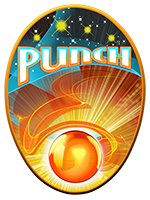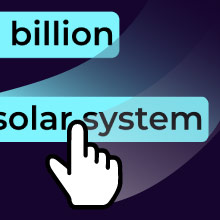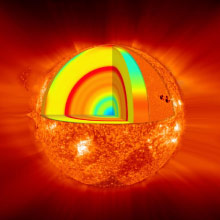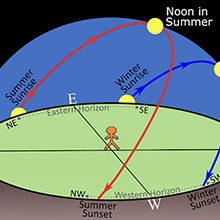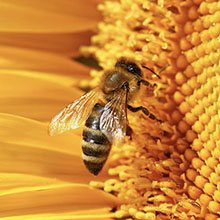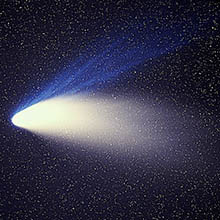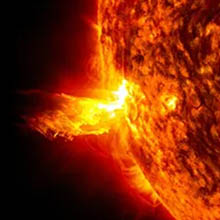Congratulations! You got them all right!

What is one difference between solar flares and coronal mass ejections
(CMEs)? ● How often does the Sun have a maximum number of
sunspots & solar storms (solar maximum)? In other words, what is the length of the sunspot
cycle? ● Why does our society need to learn to live
well with the sunspot cycle?
Click (or touch) anywhere to go back and review or screen capture your work.

 #5. SOLAR STORMS
and SUNSPOT CYCLES
#5. SOLAR STORMS
and SUNSPOT CYCLES
Solar storms often start in regions where there are sunspots. Every 11 years there is an increase in the size and number of sunspots.
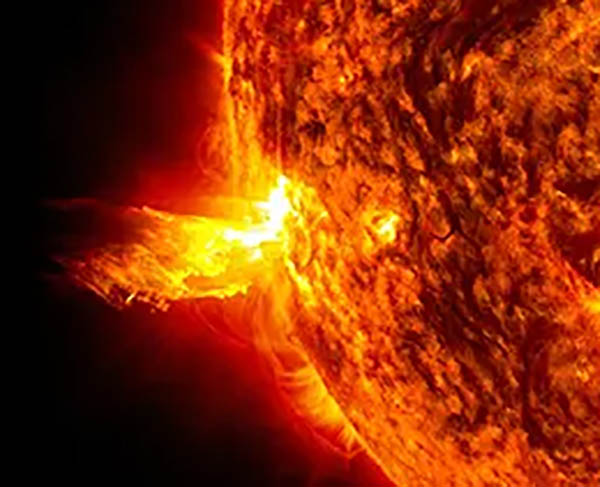
A solar flare and a coronal mass ejection (CME) are two possible features of a solar storm. This is a NASA spacecraft image of the Sun showing both a solar flare (a bright flash of high-energy light on the Sun) and a CME (the solar material blasting out into space).
Image credit: NASA/SDO
Drag-and-drop fill-in-the-blanks
FITB #5. Challenge Level: High. Word count: 378.
# Blanks: 18. Prerequisites: #1 (Where is the Sun?),
#2 (What is a Day?), and
#4 (Solar Wind).
- DRAG & DROP the words into the spaces in the paragraph below to FILL-IN-THE-BLANKS. NOTE: The word will only drop successfully when the cursor tip (or your fingertip on mobile devices) is within the light-colored box above the blank which will turn yellow when the word is properly positioned.
- TO UNDO YOUR CHOICE click on the blue circle next to the dropped word.
auroras
field
1755
corona
coronal mass ejection
astronauts
sunspots
cycles
sunspot cycle
solar minimum
solar maximum
light
eight
days
outward flow
more frequent
space weather
fewer
Large explosive releases of energy from the Sun, called “solar storms,” disturb the
of the solar wind. Just as a storm in Earth’s atmosphere might have different features like lightning, rain, and high winds,
solar storms may also have different features. Two of the most important possibilities are solar flares and coronal mass ejections.
These are both considered types of
"
."
A solar flare is a brilliant burst of
(including ultraviolet and x-rays) that takes only
minutes to travel the Sun-Earth distance. A
(or CME = see-em-ee) is a magnetized cloud of charged particles that is ejected from the Sun’s outermost layer called the solar
.
A CME’s cloud of particles can take one to three
to travel the distance between Sun and Earth.
Solar flares and CMEs can occur together or separately. Both often occur near regions of strong magnetic energy called
which appear as dark patches on the Sun. The Sun has an 11-year sunspot cycle, which means that the number and size of sunspots
increases and decreases predictably in a repeating pattern over time. Every 11 years there is an increase in sunspots that lasts
for a few years. We call this period a
“
”
when there are more and bigger sunspots and thus
solar storms. Following each period of solar maximum there is a period of
“
”
when the Sun has
sunspots and less frequent solar storms. Solar observers began keeping a continuous record of sunspot cycles in
.
We now call this Cycle 1. The NASA PUNCH mission is designed to operate during the maximum of Cycle 25 and beyond.
Most CMEs do not hit Earth, but when a CME does interact with Earth’s magnetic
,
it can be both beautiful and dangerous. The fast CME cloud of charged particles can lead to enhanced
(Northern and Southern Lights). But the storm’s effects can also be harmful to
and spacecraft.
Our ancestors learned to live in harmony with the day-night and seasonal
.
Today, we must continue doing this while also learning to live well with the 11-year
.
NASA Heliophysics missions like PUNCH, Parker Solar Probe, and many others are helping us to do this.
Check Your Answers
More Fill-In-the-Blank games
Please contact PUNCH Outreach with questions, ideas, or other comments about this product.
